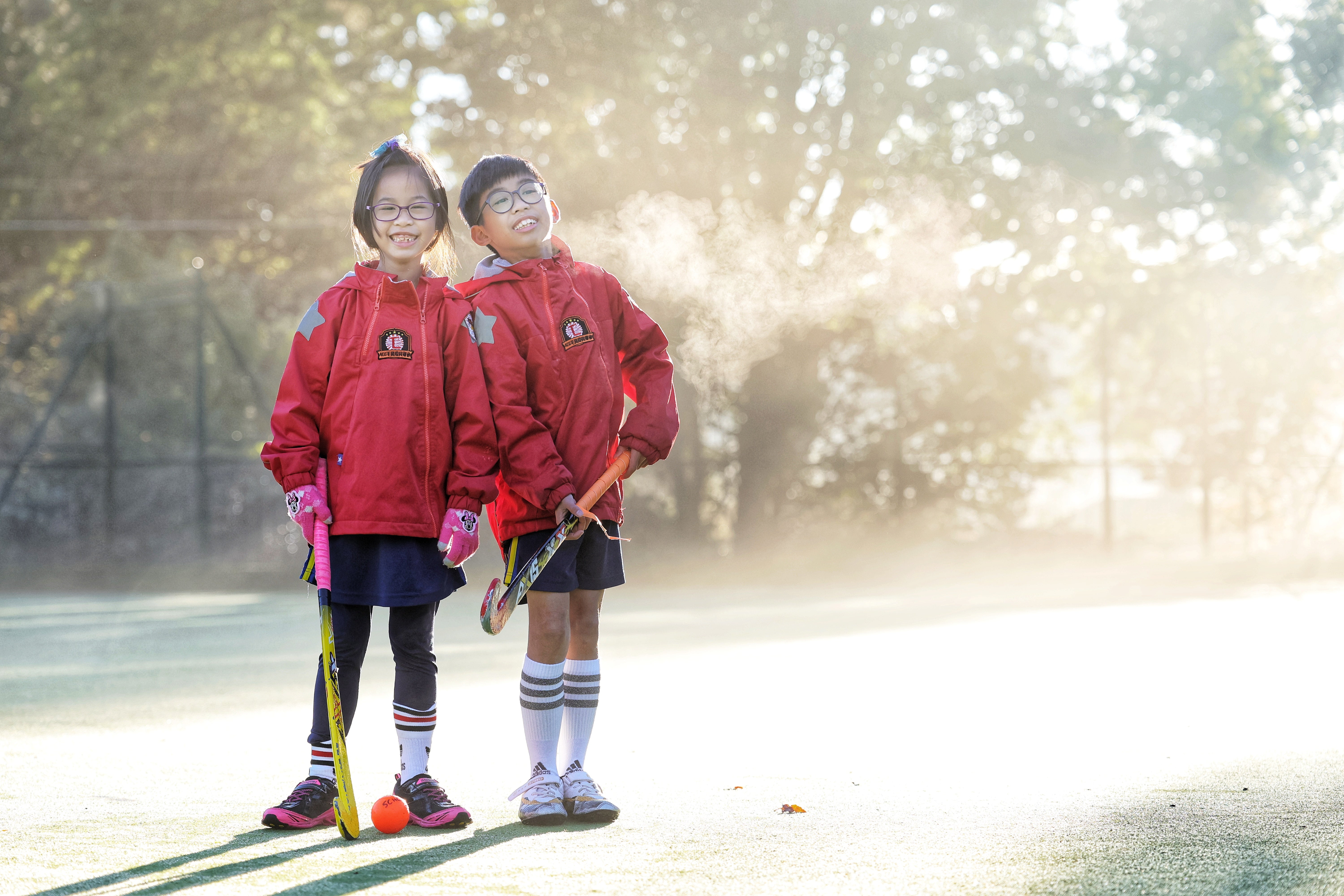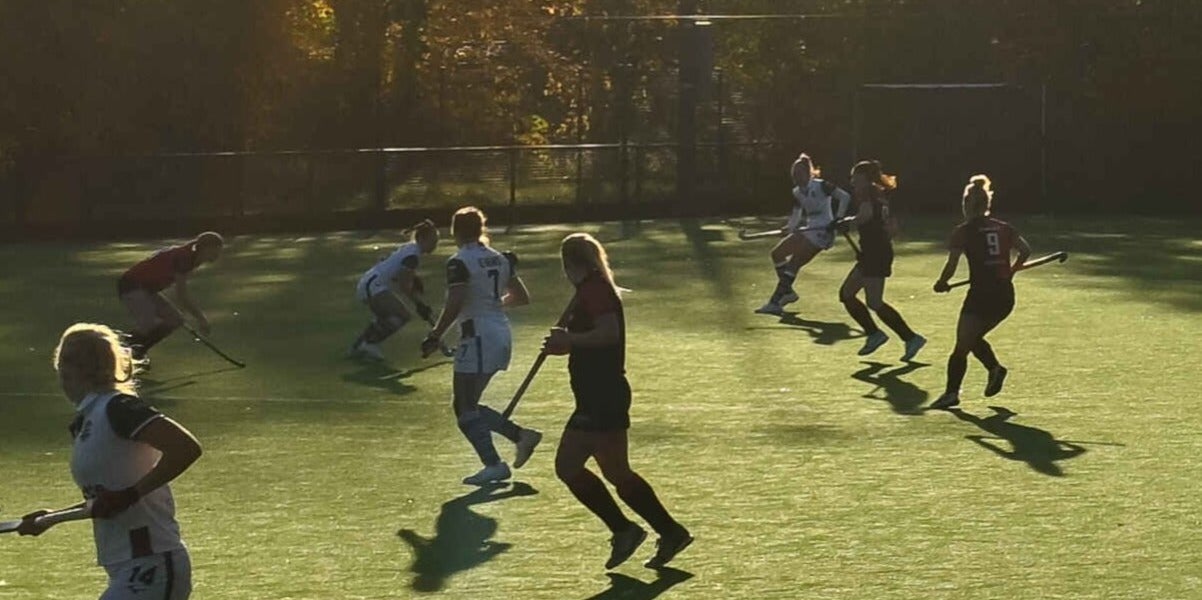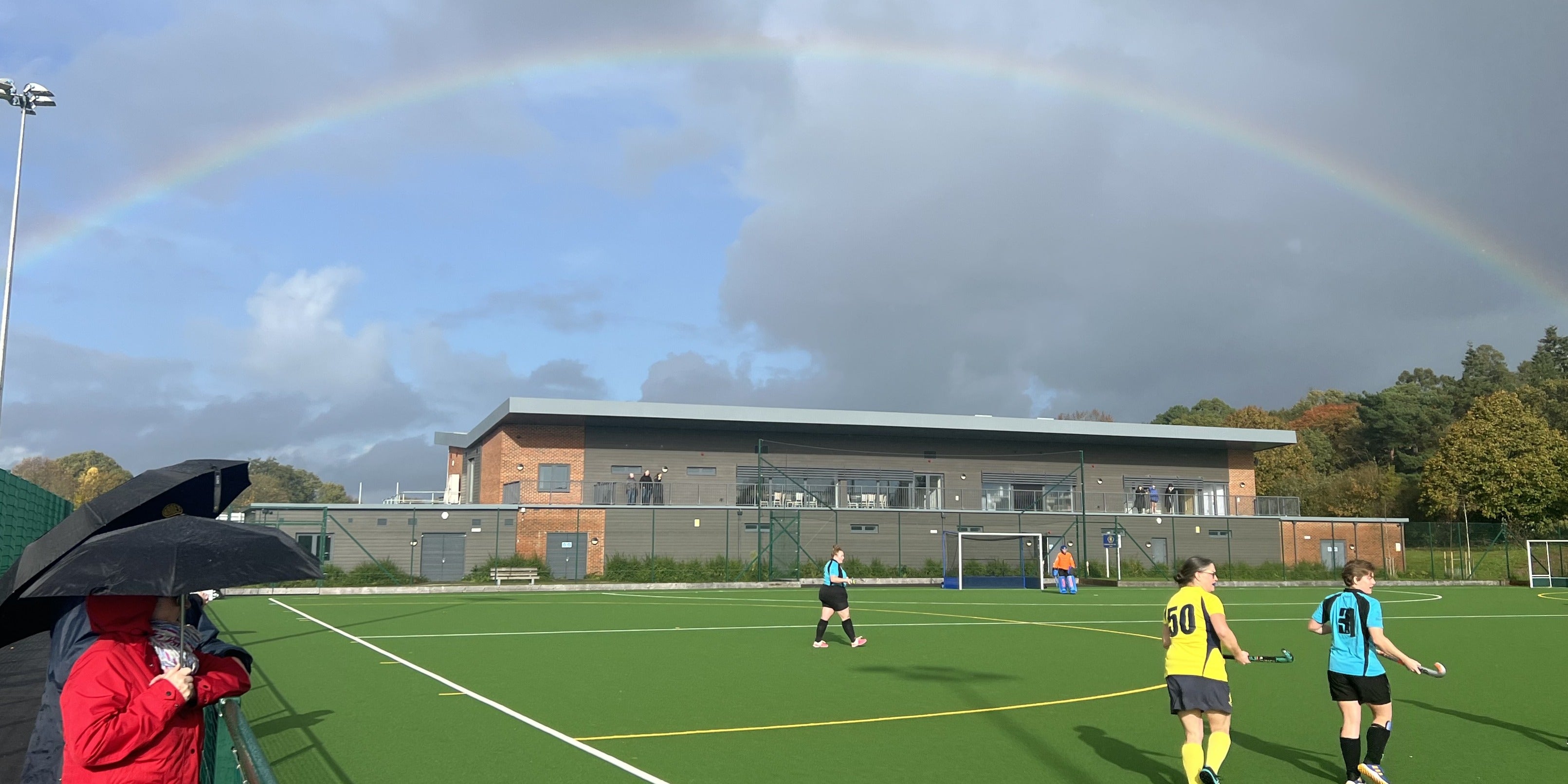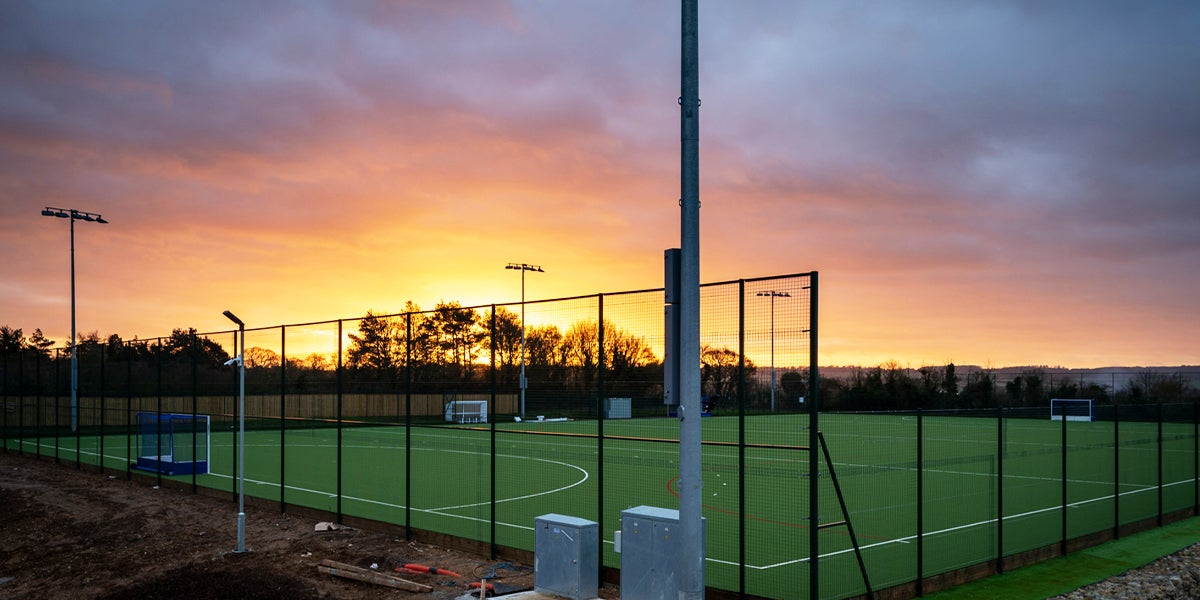Why Do We Need A ‘National Hockey Fund for State Schools & EDI?
The EH Strategy ‘Creating A Future for our Game Together’ recognises the need for hockey to become more relevant, visible and accessible in order to appeal to a new generation of young people, and their families. It sets out several strategic ambitions, including:
- Increasing awareness of hockey as a sport amongst children aged 7-13
- Increasing the number of ethnically and culturally diverse players to reflect the population
- Increasing positive perception of hockey as a sport for me and as a sport for good
- Doubling the number of state schools offering hockey by 2028
- Doubling the number of 7-13 year olds in club activity
This requires a focus on developing, supporting and improving hockey delivery across three key environments – schools, clubs and community settings. Schools because of the scale of reach they provide and because they are the environment where hockey is most widely introduced and played. Clubs because this is where we know members are most likely to play regularly and stay in the sport. Community settings because this is where we are most likely able to take hockey to currently under-served audiences such as lower socio-economic and more ethnically and culturally diverse communities.
With over 24,000 schools in England, the school landscape is vast. Schools offer universal provision, regardless of ability or affluence, and so are able to play a unique role in providing opportunities for physical activity for young people in shaping their attitudes to PE, school sport and physical activity. England Hockey and hockey clubs have done lots of good work over recent years to support the development of hockey in schools and to develop effective school club links. However, the market is so vast and the nature of school sport policy and provision is ever changing, so there is always opportunity to do more.
For more hockey provision to be developed and secured in schools, so that the number of young people being aware of hockey and potentially interested in joining clubs increases, a more concerted and sustainable approach is needed to achieve a significant and lasting impact. This was also recognised in the membership research recently conducted on behalf of EH, which clearly showed a desire from within the game for more support for hockey development in schools. It is therefore proposed that a portion of the fees raised by the new membership proposition are ring-fenced into a ‘National Hockey Fund for State School and EDI’ to enable a step change to be made in the provision of hockey in schools and to underserved audiences.
-
In its 2023 School Sport and Activity Action Plan the Government encourages schools to deliver a minimum of 2 hours’ PE time during the school day every week, so dedicated time in the curriculum ensures all pupils experience the benefits of regular physical exercise. The national curriculum for PE introduces pupils to competitive sport in their timetabled PE lessons. Extra curriculum opportunities are then offered via before and after school or lunchtime clubs. Further enrichment opportunities are made available through School Games activity and intra school competitions and competitions against other schools. Schools can either connect into the local, regional, and national competitive structures that already exist, or they can create opportunities using contacts within multi academy trusts, through local Active Partnerships or within Local Authorities.
However, the current state of school sport and PE in England is characterized by a number of challenges, including:
- Low physical activity levels: Fewer than half of young people in England meet the Chief Medical Officer's recommendation of 60 minutes of physical activity per day.
- Declining PE hours: The number of hours of PE taught in state secondary schools in England has decreased by 13% since 2011.
- Fewer PE teachers: The number of PE teachers in England has decreased since 2011.
- Inequalities: Not all children have access to the benefits of sport and exercise, with differences by age, ethnicity, sex, disability, and socio-economic group.
- Cost-of-living crisis: The cost-of-living crisis is negatively impacting children and young people's opportunities to be active.
- Girls are less active: Girls continue to be less active than boys.
- Children are spending less time outside: More than 9 out of 10 children report that they are spending less time playing outside and with friends than before the pandemic.
This demonstrates how complex and challenging the landscape around PE and sport in schools is, and how it is impacted by a range of external influences. Recent Government PE and school sport initiatives to try to address these challenges have focused on primary schools and on impacting children aged 5-11, to try to develop healthy habits and positive attitudes towards physical activity from an early age. These include the Primary PE and Sport Premium and the School Games.
Primary schools receive the Primary PE and Sport Premium Funding from the government to support the delivery of high quality PE and sport provision. Evidence shows that it has had positive effects on physical activity provision by increasing the profile of PE and sport as well as the confidence, knowledge and skills of teaching staff.
The School Games is a government-led programme that aims to:
- Provide more opportunities for young people to participate in competitive school sport
- Keep competitive sport at the heart of schools
- Help children achieve their personal best
The School Games is delivered by the Youth Sport Trust, which works with a network of School Games Organisers (SGOs) across the country. The SGOs are responsible for:
- Delivering the School Games programme
- Working alongside Active Partnerships at a county level
- Creating an annual programme of activity and support for their networks of school
The School Games includes:
- Intra-school competitions
- Local inter-school competitions
- County finals
- The School Games National Finals, a four-day multi-sport event
Established in 2010, the School Games is now positioned at the heart of school sport competition – especially within primary schools. Over 85% of all schools are registered to take part. Through the School Games pupils can take part in competitions in over 40 sports at intra-school, inter-school and regional level including inclusive, modified versions of the sports.
In response to the COVID pandemic and general children and young people activity trends, the School Games has increasingly supported those who would benefit the most from increasing the amount of physical activity they take part in. This has meant a shift from the provision of competitions for those already active to providing more bespoke opportunities for the least active communities in their area. To support this delivery National Governing Bodies of sport – including England Hockey - provide diverse and broad programmes, competitions, and resources which are shared with school staff and School Games Organisers.
In 2023-24, 2,320,376 young people participated in 26,057 events across the School Games network.
-
Despite the challenges outlined above, schools remain the environment where hockey is most widely introduced and played. Recent years have seen a shift from secondary schools introducing the majority of young people to hockey to primary schools increasingly playing this role.

Over the past 10-15 years a range of adapted and age specific formats of hockey have been developed to help make it easier for schools to deliver hockey sessions either in curriculum, extra-curricular, via School Games activity or schools competitions. These range from Hockey Heroes at Key Stage 1, Quicksticks at Key Stage 2, In2Hockey and Key Stages 2 and 3 and then the 11 a side version of the game and Flyerz Hockey (the inclusive version of the game suitable for all ages).
A tiered schools competition structure is in place to ensure there is provision of the appropriate level of competitive opportunities for schools at all levels, and for pupils of all ages and stages. This ranges from inter-school school games activity and local Quicksticks festivals at primary school age, through to secondary In2Hockey state school festivals and national knockout competitions from U14 to U18.
Teacher training and online delivery support is available for teachers and wider school staff, young leaders and / or external providers going into schools to help them plan and deliver hockey. Clubs also play a big role via their links with schools and often they deliver outreach programmes and local festivals or tournaments.
The level of hockey activity in schools is a complex and ever-changing picture, so it is difficult to track with 100% accuracy. England Hockey tries to monitor the level of hockey played in schools using headline data for a number of key indicators, and then segments schools accordingly based on the amount of hockey they deliver according to the data. These key indicators are collected from multiple data sources, such as:
- School Games Activity Data
- State School Festivals Data
- EH Schools Competition Data
- Hockey Hub Schools Data
The indicators are fed into a central database against individual school records, usually on an annual basis. Schools are then segmented into categories to indicate their level of attachment to hockey, and to track overall trends. This data currently shows that just under half of all schools in England currently have some form of attachment to hockey and deliver it in some way shape or form.
School Games data from the past fifteen years shows a trend of significant growth in hockey activity levels up until 2018-19 when a peak of over 124,000 young people took part in 2,718 registered events. Levels have declined year on year since then, firstly as a result of the Covid-19 pandemic and more recently as the focus of School Games delivery has changed. Rather than providing opportunities at scale across as many sports as possible, SGOs are now running fewer events which are specifically targeted at young people with the fewest opportunities to be active and have an individual development and overall health and wellbeing focus. Or they are choosing to deliver sports where there is direct support and or funding available to help. Consequently, some of the more traditional team and match-based sports like hockey have seen School Games delivery decline. In 2023-24 35,700 young people took part in 700 registered hockey events.
-
These are undoubtedly challenging times for schools and for school sport, as detailed above. However, there are some opportunities, especially with the continued investment in primary school PE and sport.
Between 2010 and 2020 overall hockey club membership numbers increased significantly, with the majority of this growth coming in the younger age groups, and particularly 5-10 year olds. This growth was down to a combination of factors such as the introduction of Quicksticks in 2010, the school sport premium funding and School Games investment, the peak of School Games hockey delivery, effective club development and also significant exposure and success for hockey linked to the 2012, 2016 and 2020 Olympic Games.
Since 2020, junior club numbers have declined slightly and then stabilised. Membership data from 2020-21, whilst potentially not representing an entirely complete picture due to the interruptions caused by the Covid-19 pandemic, showed an overall drop in the number of young people in clubs for the first time in a number of years. More recently, club junior membership numbers have picked up slightly but have not yet returned to the peak levels seen in 2019-20.
There is also an ever-increasing risk that school games hockey activity could see a continued decline as delivery focuses on sports who are offering direct help and support, or targets those with fewest opportunities to be active and moves more towards an overall health and wellbeing focus.
A renewed approach is therefore required to secure more hockey provision in schools, to maintain visibility and relevance to young people and to ensure that more young people are potentially interested in joining clubs. Young people who become ‘hockey players’ and have positive experiences in schools are much more likely to continue to have an association with the sport later in life.
-
To have any sort of significant and lasting impact on the delivery of hockey in schools, we need to invest in and build on the existing structures and networks in place. Only then will we be able to achieve incremental and sustained progress at scale.
We are therefore proposing to partner with YST to re-establish hockey’s position in the School Games by securing an agreed amount of SGO time to increase hockey delivery in primary schools. We will support SGOs to drive more hockey delivery in their network of schools, which in turn facilitates opportunities for as many young people as possible to enjoy a positive hockey experience in primary school. SGOs already have existing relationships and credibility with their networks of schools so they are uniquely placed to provide local coordination and to create opportunities for more hockey delivery.
Data will be used to prioritise the investment towards those areas with the greatest need based on the location of hockey clubs with junior sections, levels of existing school hockey activity, and levels of deprivation and inactivity. Initially we will run a pilot project in an agreed number of locations to demonstrate impact and to show how we can expand provision systematically via the network of School Games Organisers.
A number of parties will have a role to play if this is to be successful but with a collaborative push we can make a significant impact and this is a proven approach as past data shows that when more hockey activity was delivered via the School Games network, activity levels increased and so did Club Membership between the ages of 5-10.
Role of EH:
- Provide age and stage appropriate hockey delivery content free of charge for both in curriculum and out of curriculum
- Provide free access to CPD for teachers, school staff & young leaders
- Provide clear guidance on standards of deployment and on health and safety
- Club Development Managers can support schools working with local clubs
- Signposting to suitable (adapted) equipment to make the game safer & easier to deliver
- Development of overall schools competition framework - tiered for different ages / stages
- Develop resources to help clubs and schools establish positive long-term relationships
Role of Clubs:
- Engage with local SGOs / SSPs and support plans and delivery as much as possible
- Have a local presence - ideally go into local schools to deliver in or out of curriculum, taster sessions, assemblies etc
- Provide a pitch / facility for activity & festival if possible
- Support delivery of festivals
- Provide an option for young people to transition smoothly and seamlessly to the club for those that might want it
Role of SGO’s:
- Planning - review data / current hockey activity levels and engage with local club and other local partners to share knowledge and insight and to make local plans
- Engagement - share plans & delivery / support info and offer with schools / teachers in their networks
- Delivery - organise at least 1 x primary school hockey festival per year
- Reporting - reporting throughout at agreed intervals
Role of Schools:
- Respond to invite from EH & YST/SGO
- Attend teacher training / CPD (online at no cost) & utilise training for young leaders
- Use resources and support materials provided to plan and deliver some form of hockey leading into festival (as per suggestions in EH content)
- Enter teams into the festival run by SGO
- Provide pitch / facility for activity & festival if possible
- Link in with local Club and communicate exit route to young people
Role of YST:
- Identification of SGO areas and contacts
- Management of SGOs against delivery KPI’s
- Ongoing communication with SGO network
- Identification and sharing of good practice
- Finance management/distribution along with clear, structured termly reporting processes to capture reach
- Alignment to wider PE/School Sport strategic direction
- Impact Stories bringing to life the depth of this work for young people
-
The establishment of the ‘National Hockey Fund for State Schools and EDI’ via the revised membership proposal will enable hockey as a sport to secure a significant and lasting presence in schools. By enabling us to work with YST and SGO’s in a structured and sustainable way to drive more School Games hockey activity we can make a significant difference to the amount of hockey delivery in schools. This in turn will introduce more young people to hockey, provide more positive experiences and therefore increase the likelihood of more young people joining clubs by helping hockey to become more relevant, visible and accessible and appeal to a new generation of young people, and their families.
Through targeted approaches in particular locations, we will also be able to reach underserved audiences such as lower socio-economic and more ethnically and culturally diverse communities, helping achieve our aim of making hockey more representative of society.
Initial pilot activity will take place in an agreed number of locations in 25-26, with the aim of expanding into more locations over time as we demonstrate impact.




